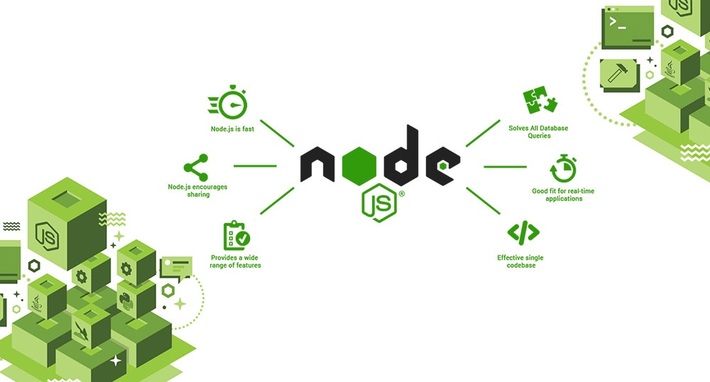Tube Rank: Your Guide to Video Success
Discover tips and insights for optimizing your video presence.
Node.js: Where JavaScript Goes to Party
Unleash the power of JavaScript in Node.js! Discover tips, tricks, and insights to elevate your coding game at this epic tech party.
Understanding the Event-Driven Architecture of Node.js
Event-Driven Architecture is a programming model that is fundamental to Node.js, enabling developers to create highly scalable applications capable of handling numerous simultaneous connections with great efficiency. In this architecture, processes are executed in response to events—such as user inputs, messages from other applications, or signals from a server—rather than following a linear execution path. By utilizing non-blocking I/O operations, Node.js can achieve remarkable throughput, as it allows the server to continue processing other requests while waiting for tasks like database queries or file operations to complete.
Central to the event-driven architecture of Node.js is the Event Loop, which acts as the hub managing all asynchronous events. This single-threaded loop listens for events and dispatches them to the appropriate handlers. When an event triggers, such as a user's request, the event loop ensures that all necessary callbacks are executed without blocking the overall process, making it ideal for building real-time applications. By understanding this architecture, developers can leverage the power of Node.js to create applications that are not only fast but also resilient to traffic spikes.

10 Reasons Why Node.js is Ideal for Real-Time Applications
Node.js has gained immense popularity for developing real-time applications due to its unique features and architecture. One of the primary reasons is its non-blocking I/O model, which allows multiple connections to be handled simultaneously without waiting for operations to complete. This makes Node.js particularly suitable for applications that require a constant flow of data, such as chat applications and online gaming. Additionally, thanks to its event-driven architecture, developers can respond to user interactions in real-time, providing an enhanced experience.
Another significant advantage of using Node.js for real-time applications is its extensive ecosystem of npm packages. This rich variety of libraries and modules enables developers to quickly integrate features like WebSocket support, which is crucial for real-time data transfer. Furthermore, Node.js's ability to use JavaScript on both the client-side and server-side simplifies development, allowing for more seamless code sharing and collaboration among teams. These factors contribute to making Node.js an ideal choice for developers looking to create fast, scalable, and interactive real-time applications.
How to Get Started with Node.js: A Beginner's Guide
Node.js is an open-source, cross-platform JavaScript runtime environment that enables developers to create server-side applications with ease. If you're new to Node.js, the first step is to install it on your machine. You can download the latest version from the official Node.js website. Once installed, open your terminal or command prompt and verify the installation by running node -v and npm -v. This will display the installed versions of Node.js and npm (Node Package Manager), which is essential for managing packages and dependencies in your projects.
After setting up Node.js, it's time to start coding. Create a new directory for your project, navigate into it using the terminal, and run npm init. This command will guide you through setting up a package.json file, which is crucial for any Node.js application as it records metadata relevant to the project. Next, you can install essential packages using npm install. For beginners, building a simple web server with Node.js is a great way to get started. You can do this by creating a file named server.js and adding the following code:
const http = require('http');
const hostname = '127.0.0.1';
const port = 3000;
const server = http.createServer((req, res) => {
resstatusCode = 200;
res.setHeader('Content-Type', 'text/plain');
res.end('Hello World\n');
});
server.listen(port, hostname, () => {
console.log(`Server running at http://${hostname}:${port}/`);
});